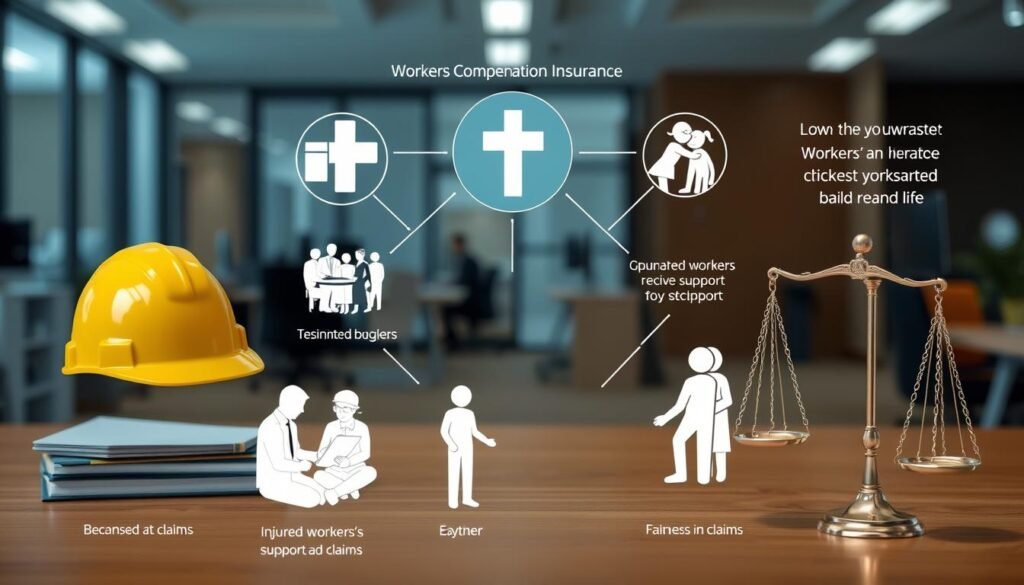Choosing an insurer for retirement income is crucial. Venerable Insurance and Annuity Company focuses on managing legacy annuity blocks since 2018. This review explains what that means for your policies.
If you have a contract like Focus or GoldenSelect, you need to know about coverage and rates. We’ll cover customer reviews, phone support, and the login portal. We’ll also talk about the company’s address, forms for withdrawals, and who owns the business.
This review shows why Venerable is a reliable firm. It manages legacy blocks, not new contracts. Learn about rates, KBRA’s A rating, and NAIC complaint data. This helps you understand policyholder concerns.
Table of Contents
ToggleKey Notes;
- Venerable focuses on managing legacy annuity blocks rather than issuing new contracts.
- Important to verify rates and rider details with the original issuer listed on your contract.
- Customer support, online login, company address, and withdrawal forms matter for service and access.
- KBRA rates Venerable A, but major rating agencies like AM Best, S&P, and Fitch have not rated it.
- Ownership mix of private equity and strategic partners affects long‑term strategy and governance.
Company overview and history of Venerable
Venerable started in 2018. It was a private equity-backed firm. Its goal was to manage legacy annuity contracts well.
It began with a team of experienced annuity experts. They came from big insurers. This helped keep service good during the transition.
Founding and corporate evolution
Venerable launched on June 1, 2018. Investors bought a big block of legacy annuities. This move put a lot of business under one roof for long-term management.
Management focused on keeping customers happy. They also kept the team from old carriers. This made the transition smoother for policyholders.
Business model: acquiring and managing legacy annuity blocks
Venerable is a legacy annuity manager. It doesn’t sell new annuities. It makes money from fees and managing assets.
It aims to make things better by cutting costs. This helps improve service for policyholders.
Headquarters, offices, and scale of operations
Venerable has bases in Des Moines, Iowa, and West Chester, Pennsylvania. These places handle policy admin, claims, and client service. It has a big team to manage billions in reserves.
It keeps in touch with old staff. This helps keep things smooth for policyholders.
Key milestones and major acquisitions (Voya, John Hancock, Athene, Equitable)
The big deal was buying Voya’s annuity business. This was a huge move for Venerable. It also bought more contracts from John Hancock, Athene, and Equitable.
Athene helped with a big deal. It managed a big portfolio of fixed and fixed indexed annuities.
| Year | Milestone | Impact |
|---|---|---|
| 2018 | Launch and initial acquisition from Voya | Established Venerable as a legacy annuity manager with significant policyholder base |
| 2019–2020 | Operational buildout in Des Moines and West Chester | Retained experienced staff and improved servicing continuity for transferred contracts |
| 2020 | Athene reinsurance and asset management deal | Transferred $19 billion in fixed annuities for reinsurance and investment services |
| 2021–Present | Additional annuity acquisitions and portfolio transfers | Expanded scale and diversified managed contracts across multiple legacy issuers |
Venerable Insurance and Annuity Company
Venerable is not a traditional insurance company. It manages and administers legacy annuities. The company, VIAC, oversees contracts bought from big carriers.
Venerable works closely with investment firms and reinsurers. This partnership lets Venerable focus on administration. Meanwhile, partners handle the investments or reinsurance.
At the start, Venerable had about $30 billion in assets from Voya. This money is the base of their assets today. Voya and Athene manage the investments for some contracts, while Venerable handles the day-to-day work.
Venerable started with around 600,000 contracts from Voya. The company has a portal for advisors and annuitants. This helps them find information about their contracts.
Venerable planned to hire 240 people at first, aiming for 300. The company is split between Des Moines and West Chester, PA. Des Moines handles central operations, and West Chester focuses on client service and legacy accounts.
Venerable does many tasks, like policy administration and customer service. The company uses a split-site model. This way, they can use local talent and keep close to the contracts they manage.
| Topic | Details |
|---|---|
| Operating name | VIAC (Venerable’s legal operating entity) |
| Venerable Insurance and Annuity Company legal structure | Manager/administrator model with asset management and reinsurance partners |
| Assets under management | Initial AUM circa $30 billion from Voya acquisition; managed portfolios with partner firms |
| Policyholder base | Approximately 600,000 legacy contracts at launch, listed in company product portal |
| Staffing | About 240 employees at start, planned expansion toward 300 |
| Des Moines office | Downtown Des Moines hub for central operations and corporate functions |
| West Chester office | Hub Tower location for client service and legacy account teams, subleased from Voya |
| Third-party roles | Voya and Athene administer or reinsure portions; asset managers handle investments |
Who owns Venerable Insurance and Annuity Company
Venerable is a run-off specialist backed by private capital and strategic partners. It is owned by a group of investment firms and legacy insurers. They moved assets and policies into a dedicated vehicle for long-term management.
Ownership breakdown
Major stakeholders include Apollo Global Management, Crestview Partners, and Reverence Capital Partners. Each holds a significant stake. Athene is a strategic partner and investor, while Voya Financial has a minority interest from legacy block transfers. This mix of private equity and insurer capital shapes Venerable’s ownership without public pressure.
Control structure
Venerable is under an intermediate holding company. This reflects the shared control of its investors. Apollo brings deep capital markets experience and asset management access. Crestview and Reverence add operational and insurance expertise. Athene’s investor status influences governance and risk decisions.
Governance implications
Private equity firms focus on a multi-year horizon and cost discipline. This leads to governance structures that emphasize board oversight and asset liability management. The board composition mirrors the investor mix, affecting committee roles and executive incentives.
Long-term strategy
The private equity model supports a run-off strategy for stable cash flows from legacy annuities. Investors aim to preserve policyholder benefits while extracting operational efficiencies. Strategic ties to Athene and Voya provide reinsurance options and distribution knowledge without direct retail sales pressure.
| Stakeholder | Approximate Stake | Primary Role |
|---|---|---|
| Apollo Global Management | ~23% | Capital provision, asset management expertise, strategic oversight |
| Crestview Partners | ~23% | Private equity governance, operational guidance, board representation |
| Reverence Capital Partners | ~23% | Insurance industry specialization, run-off management experience |
| Athene | ~21% | Reinsurance partner, capital support, strategic investor |
| Voya Financial | ~10% | Legacy policy transfers, limited ongoing minority interest |
Types of annuity products managed by Venerable

Venerable manages closed blocks of annuities from big issuers. They focus on variable and other types, especially those with long-term guarantees.
Variable annuities are key for Venerable. They come from companies like Voya, John Hancock, and Wells Fargo. People keep their investments safe with guarantees that protect their income or principal.
They handle many types of annuities. These include Focus, Architect, GoldenSelect ESII, and more. They keep the terms the same but adjust to support the benefits.
Many contracts have special features. GMIB riders and similar guarantees promise a steady income, even when the market drops.
Venerable also manages fixed and fixed indexed blocks. They work with Athene for these contracts. This lets them focus more on variable annuities.
| Product Category | Example Names | Typical Guarantee | Primary Management Role |
|---|---|---|---|
| Variable annuities | Focus, Architect, Preferred Advantage, Voya Rollover Choice | GMIB riders; income and death benefit guarantees | Ongoing hedging, reserve management, policy servicing |
| GoldenSelect series | GoldenSelect ESII, GoldenSelect Opportunities | Market‑linked upside with guaranteed floors | Maintain guarantees, process withdrawals, adjust hedges |
| Wells Fargo Landmark | Wells Fargo Landmark Variable Annuities | Riders that protect income and death benefits | Runoff management, customer account service |
| Fixed / Fixed indexed annuities | Various transferred blocks administered via Athene | Declared interest rates or indexed crediting | Administration and reinsurance coordination |
Other insurance and annuity offerings and coverage options
Venerable focuses on managing legacy contracts. It keeps the original policy terms for holders. This means payout schedules, surrender periods, and annuity riders stay the same.
Venerable handles fixed annuities administration. Athene takes the insurance risk under reinsurance deals from Voya. This setup keeps daily service with an administrator and moves risk to a reinsurer.
Fixed indexed annuities keep their original crediting methods and index strategies. Owners can still choose payout options like life-contingent income or lump-sum distributions.
Life insurance is available through partners and legacy assumptions, not active sales by Venerable. Policyholders with legacy life coverage use the same claims and beneficiary rules unless the contract changes.
Surrender charges and withdrawal penalties follow the original contract schedules. These fees can impact the timing and value of transfers or withdrawals. Check the contract and the company portal for exact amounts and surrender periods.
Annuity riders like guaranteed lifetime income and death benefit enhancements are still enforceable. Riders may have ongoing fees and specific election windows that affect long-term income planning.
Practical steps for policyholders:
- Locate your original contract to confirm payout options and surrender charges.
- Contact the Venerable product portal or your broker for rider status and fee details.
- Ask life insurance partners about legacy coverage that moved with portfolio transfers.
Rates, performance, and financial strength
Venerable manages old annuity contracts, not new ones. Policyholders should talk to the original company for current rates and statements. This is key when looking at rates and performance for a specific contract.
How Venerable reports contract details
Venerable shares big numbers and how solid it is financially. But, each contract still follows its own rules and language. For exact payout info, compare Venerable’s summary with Voya, John Hancock, or the original company’s statements.
Agency marks and independent evaluation
Third-party ratings check if a company’s claims are true. Venerable has a KBRA A rating from Kroll Bond Rating Agency. AM Best, S&P, and Fitch didn’t rate Venerable at that time. Look at many ratings to get a full picture of financial health.
Key annuity performance drivers
How well an annuity does and its guarantees depend on reserves and hedging. Good reserves cover benefits, and smart hedging lessens market risks. But, bad reserve and hedging plans can make guarantees shaky in tough markets.
Operational links that affect outcomes
Asset managers like Athene and Voya teams shape investment returns. Private equity ownership offers flexibility and a long view. But, it’s still important to watch statutory reports and rules to judge rates and performance.
- Check original issuer statements for contract rates and crediting rules.
- Compare KBRA A rating with other industry insurance ratings where available.
- Inspect reserve and hedging disclosures to identify annuity performance drivers.
Customer experience, complaints, and service contacts
Venerable has mixed reviews on customer experience. They say they offer quick customer support and have service centers in Des Moines and West Chester. But, the NAIC complaint index shows a high number of complaints about individual annuities.
NAIC complaint index results and interpretation
The NAIC complaint index is around 13.68 for overall scores. For individual annuities, it’s about 243.21. These numbers are much higher than what’s normal for legacy annuities.
Most complaints are about complex rules, rider calculations, and paperwork. They’re not usually about simple questions.
Customer service access and where to find it
Venerable lists how to reach customer support on venerable.com. You can find phone numbers, addresses for Des Moines and West Chester, and links to product pages. These pages help you find the right contact for your legacy annuity.
For account access, use the secure login portal on their site. Or, check the original issuer’s portal if your contract is still linked there.
Forms, annuity withdrawal forms, and common requests
Handling administrative tasks follows the rules of your legacy contract. You might need annuity withdrawal forms, distribution forms, or to update beneficiaries. You can find these forms on Venerable’s product portal or in mail notices.
When you manage your policy, have your contract numbers, recent statements, and ID ready. This makes it easier to process withdrawals and changes to beneficiaries.
If you have complex disputes or service issues, use the escalation paths on the company site. Financial advisors can also help with understanding legacy riders and withdrawal rules.
Claims, withdrawals, and policy management process

Venerable manages old annuity contracts. They follow the original contract rules but offer modern support. Policyowners should check their original contract for details.
Contact Venerable or the original issuer for forms and help with riders like GMIBs.
How to submit a claim or request a withdrawal
To start, find your contract number and beneficiary info. Ask for the withdrawal form from Venerable or the original issuer. Fill out the form and include all needed documents.
Surrender charges, withdrawal penalties, and RMD rules
Old annuities might have surrender charges for early withdrawals. There are penalties for early access. Partial withdrawals can lower rider values.
Qualified annuities have RMD rules from the IRS and the contract. Expect taxes and possible withholding on distributions.
Timelines, required documents, and verification
Withdrawal times vary by product. Simple ones take 1-3 weeks. Death or disability claims need more time and checks.
Common documents include a signed form, ID, tax forms, and beneficiary paperwork. Medical proof is needed for health claims.
Escalation channels and service continuity
If you can’t get help, use escalation channels. Start with Venerable, then the state insurance department or NAIC. Experienced Voya staff help keep things consistent.
| Action | Typical Documents | Expected Timeline | Notes |
|---|---|---|---|
| Partial withdrawal | Signed withdrawal form, ID, W-9/W-8BEN | 7–21 days | May incur surrender charges or reduce rider values |
| Full surrender | Complete contract, signed request, ID, tax forms | 2–6 weeks | Evaluate surrender charges and tax consequences |
| Death claim | Death certificate, beneficiary ID, beneficiary proof | 2–8 weeks | Processing delays possible for estate or probate cases |
| RMD distribution | RMD election form, contract details, tax forms | 1–3 weeks | Follow IRS timeline and original contract rules |
| Rider election or adjustment | Rider election paperwork, signed consent | 2–4 weeks | Specific election steps appear in original rider documentation |
Keep copies of everything and track your communications. This helps when you need to escalate issues. Regularly review your policy to avoid surprises about surrender charges.
Pros and cons and how Venerable compares to competitors
Venerable focuses on older annuity blocks. They help with contracts closed by other companies. This focus gives policyholders special help with older variable annuities.
The company has a KBRA A rating. This rating shows they are trustworthy. They also have a team with lots of experience from other companies. This helps keep things running smoothly for contracts they take over.
Advantages
- They manage older annuities well, which helps current owners.
- Their strong credit rating means people can trust them with their money.
- They have a team with lots of experience, which helps with complex issues.
Disadvantages
- They don’t sell new annuities, so people looking for new ones need to look elsewhere.
- They have a high number of complaints, which might make some people worry.
- They started in 2018, which is a short time compared to some other companies.
When comparing Venerable to Voya, remember they do different things. Voya sells new annuities, while Venerable handles older ones. This affects what products are available and how customers can buy them.
John Hancock is similar to Venerable in some ways. They both sell new annuities, but Hancock has a wider range of products. Venerable focuses on older contracts. It depends on what you need.
Athene is involved in many deals as a reinsurer and asset manager. This can change how risks are handled and prices are set. It’s important to look at these deals when thinking about safety and guarantees.
Equitable offers a wide range of products and sells them directly. Venerable focuses on older contracts and has a more streamlined process. It’s about what you need and what you value more.
When choosing, think about what you want. Venerable might be good for handling older contracts. But if you want a new contract, you might want a company that sells those directly.
It’s a good idea to check out different products and companies. Look at what they offer, how much it costs, and what guarantees they have. Also, check out their ratings and see if they have any complaints.
Tips for choosing the right policy and working with a legacy annuity manager

Choosing a retirement plan needs clear steps and questions. Make sure guarantees, dates, and who backs rider promises are verified. Keep all transfer notices and any talks about asset managers or reinsurers.
Questions to ask
- Did my contract transfer to the new manager? Ask for written notice with transfer terms and asset manager name.
- Who bears insurance risk: the servicing firm or a reinsurer like Athene? Get details on reinsurance.
- What’s the status of guaranteed riders and GMIBs? Check if original contract terms still apply.
- How do surrender charges, fees, and hedging affect long-term value?
When to consult an annuity specialist or independent advisor
- Get an annuity specialist for guarantees, tax issues, or complex riders.
- Ask for a cost-benefit comparison of keeping the legacy contract versus moving funds.
- Call a fee-only advisor for unbiased guidance and fiduciary analysis.
Contract review checklist
- Check original issuer details and current rate tables on the product portal.
- Verify rider status, charges, surrender schedule, and processing for withdrawals and RMDs.
- Get documents showing who manages investments and who holds underwriting risk.
- Look at company financials, KBRA rating, and state insurance department notices or reports.
- Test customer service by asking a simple question to see how they handle claims and tasks.
Use these tips for legacy annuity managers when picking a policy. The checklist and focused questions help talks with an annuity specialist. Keep records, check company strength, and update your plan with market or regulatory changes.
Conclusion
Venerable conclusion: the firm specializes in managing legacy annuity blocks. This includes variable annuities with GMIB riders from Voya and John Hancock. It has a KBRA A rating and backing from private equity, like Athene.
However, the NAIC individual annuity complaint index shows some service issues. This affects some clients.
An annuity benefits summary should compare guaranteed income to risks. Check who bears insurance risk and the terms of riders. Also, look at the original issuer’s documents for rates and contract history.
Get the right forms early to avoid delays in claims or distributions.
Next steps for annuity holders include reviewing contract details. Watch ratings and complaint trends. Also, talk to an independent financial advisor for tax or complex questions.
For trusted advice, gather documents and compare options. Decide if the run-off model meets your long-term goals.










